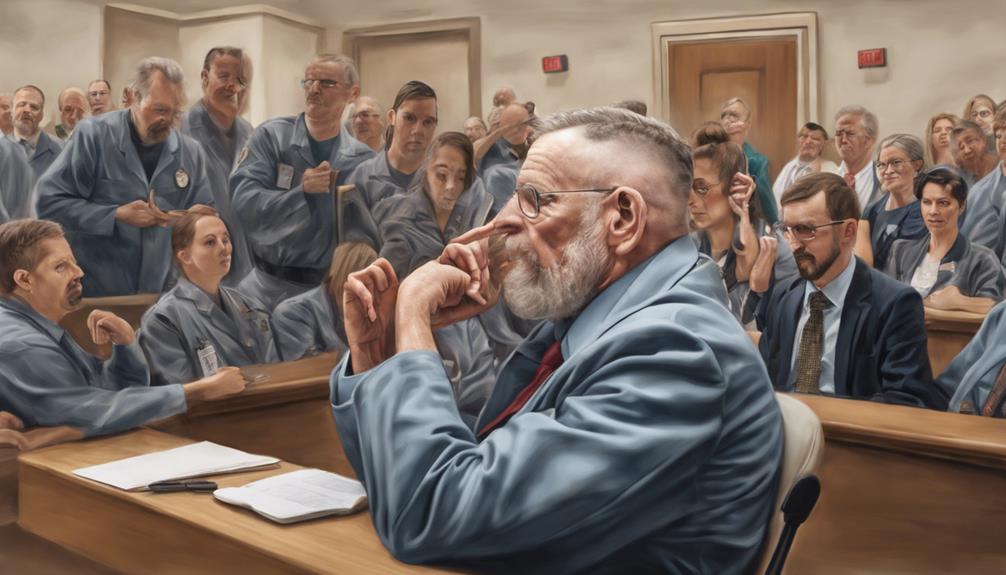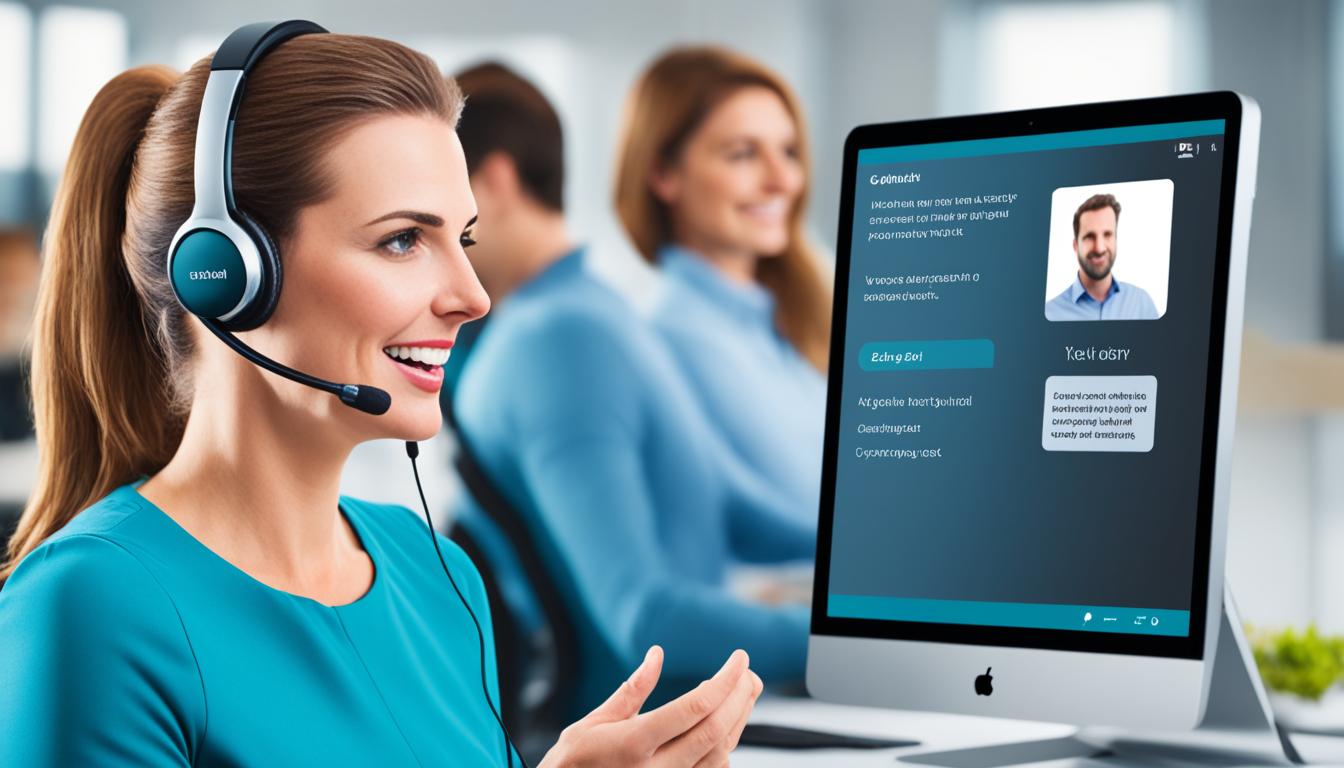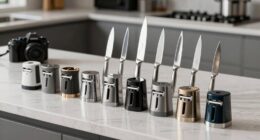Have you ever experienced the frustration of not being able to understand someone’s words during a phone call? The struggle of trying to piece together a conversation with missing information? Now, imagine dealing with this challenge every day, where even a simple phone call becomes a confusing maze of misunderstandings and misinterpretations.
For the hearing impaired, communication barriers can be isolating and disheartening. But there’s hope. Enter speech-to-text phones. These remarkable devices are revolutionizing the way individuals with hearing impairments connect with the world, offering a lifeline of understanding and inclusion.
With speech-to-text phones, every word spoken by the caller is transformed into written captions, displayed on a large screen. This real-time transcription bridges the gap, allowing the hearing impaired to read what is being said, ensuring nothing gets lost in translation.
Imagine the relief of being able to have fluid, effortless conversations on the phone, without constantly asking for repetitions or feeling left out. Speech-to-text phones are particularly beneficial for seniors and individuals with profound hearing loss, helping them maintain independence and stay connected with loved ones.
Whether it’s catching up with family members, conducting business calls, or simply enjoying leisurely conversations, speech-to-text phones bring back the joy and ease of communication for the hearing impaired.
Key Takeaways:
- Speech-to-text phones provide a lifeline for individuals with hearing impairments, displaying written captions of the caller’s words in real-time.
- These phones enhance communication and understanding, particularly for seniors and individuals with profound hearing loss.
- With speech-to-text phones, individuals with hearing impairments can regain independence and stay connected with loved ones.
- Speech-to-text phones are invaluable for business calls, personal conversations, and leisurely chats.
- By eliminating communication barriers, speech-to-text phones bring back the joy and ease of conversation for the hearing impaired.
What are Captioned Speech-to-Text Telephones?
Captioned speech-to-text telephones, also known as captioned phones, are amplified phones that display every word the caller says on a large screen. These phones are designed to assist individuals with severe to profound hearing loss in understanding phone conversations. They come equipped with features such as adjustable loud ringers, built-in answering machines, and speakerphones. Captioned phones are a great communication tool for the hearing impaired.
Captioned speech-to-text telephones provide a visual representation of spoken words, making it easier for individuals with hearing loss to comprehend phone conversations. The large screen displays the caller’s words in real-time, ensuring that no part of the conversation is missed.
These phones are especially beneficial for those with severe to profound hearing loss, who may struggle to understand spoken words over the phone. By having the conversation textually displayed on the screen, individuals with hearing loss can read the words and comprehend the conversation more accurately.
The adjustable loud ringers on captioned phones ensure that users can easily hear incoming calls, even in noisy environments. The built-in answering machines allow users to listen to voicemails at their convenience, further enhancing communication accessibility.
Additionally, captioned phones often come equipped with speakerphone functionality, allowing users to have hands-free conversations. This feature is particularly useful for individuals with limited dexterity or those who prefer a more natural conversational experience.
Overall, captioned speech-to-text telephones greatly improve communication accessibility for individuals with hearing loss. These phones provide a visual representation of spoken words and offer various features to enhance the user’s phone experience.
CapTel: A No Cost Option
CapTel is a leading brand that offers captioned speech-to-text telephones for individuals with hearing loss. With CapTel phones, users can easily understand phone conversations by reading written captions of the caller’s words. This innovative technology bridges the communication gap and provides an inclusive experience for the hearing impaired.
CapTel offers a range of models to cater to different needs and preferences. Whether you prefer a traditional landline phone or an Internet-based phone, CapTel has you covered. These phones come equipped with user-friendly features such as adjustable font size, customizable volume control, and high-quality sound amplification.
One remarkable aspect of CapTel is that eligible individuals with hearing loss may be able to receive an Internet-based CapTel phone at no cost. This demonstrates the commitment of CapTel in making communication accessible and affordable for everyone. The no-cost option ensures that individuals with hearing loss can stay connected with loved ones, friends, and important phone services without financial barriers.
CapTel’s dedication to improving the lives of the hearing impaired is evident in their commitment to providing high-quality captioned speech-to-text telephones. By incorporating speech recognition technology, CapTel empowers individuals with hearing loss to communicate effortlessly over the phone.
CapTel Phone Models:
| Model | Features |
|---|---|
| CapTel 2400i | Large captioning display, adjustable font sizes, answering machine |
| CapTel 840i | Compact design, adjustable font sizes, compatible with hearing aids |
| CapTel 880i | High-resolution touchscreen display, adjustable font sizes, speakerphone |

CapTel phones provide a seamless and convenient experience for individuals with hearing loss. The written captions displayed on the screen enable users to follow conversations confidently without missing any important information. Whether it’s catching up with loved ones or making important business calls, CapTel ensures that communication is effortless and inclusive.
Transitioning to a CapTel phone can truly make a difference in the lives of individuals with hearing loss. The combination of advanced speech recognition technology and the availability of no-cost options sets CapTel apart as a leading provider of communication solutions for the hearing impaired.
“CapTel phones have transformed my ability to communicate over the phone. The captions on the screen make it so much easier for me to understand conversations. I’m grateful for the no-cost option, as it has allowed me to stay connected without worrying about the financial burden.” – Rachel, CapTel user
Mobile Apps for Speech-to-Text Conversion
In addition to dedicated speech-to-text phones, there are also mobile apps available for speech-to-text conversion. These apps use speech recognition technology to transcribe spoken words into written text. Popular speech-to-text apps include Ava, Otter, Rogervoice, Skype, Google Live Transcribe, and Speechnotes. These apps can be downloaded from app stores and are compatible with both Android and iOS devices.
With the growing popularity of smartphones, speech-to-text apps have become convenient tools for individuals with hearing impairments. These apps offer the flexibility of using familiar devices and provide real-time transcription, making communication more accessible and inclusive.
Notable Speech-to-Text Apps:
- Ava: Ava is a speech-to-text app that uses artificial intelligence technology to provide accurate transcriptions. It enables real-time captioning and supports multiple speakers.
- Otter: Otter is a popular app that offers live transcriptions and the ability to search and organize transcripts. It also provides collaboration features, making it ideal for group discussions and meetings.
- Rogervoice: Rogervoice is a speech-to-text app designed specifically for the deaf and hard of hearing. It offers real-time transcription during phone calls, allowing users to read the conversation as it happens.
- Skype: Skype, a widely used communication app, provides a built-in live captioning feature that allows users to add captions to video calls and conferences.
- Google Live Transcribe: Google Live Transcribe is an Android app that transcribes speech in real time and displays it as readable text on the screen. It supports multiple languages and can be a valuable tool for communication.
- Speechnotes: Speechnotes is a speech recognition app that converts spoken words into text. It offers features such as voice commands and the ability to export transcriptions to various platforms, making it versatile for different purposes.
These speech-to-text apps offer a range of features and functionalities to suit different user preferences. Whether it’s for personal conversations, work meetings, or educational settings, there is a speech-to-text app available to enhance communication for individuals with hearing impairments.

Assistive Communication Devices for the Hearing Impaired
Apart from speech-to-text phones and apps, there are various other communication devices available for individuals with hearing impairments. These devices include amplifiers for telephones and doorbells, vibrating alarm clocks, and visual signalers. They are designed to enhance communication and accessibility for those with hearing loss. These devices can greatly improve the quality of life for individuals with hearing impairments.

| Communication Devices | Description |
|---|---|
| Amplifiers for Telephones | Amplify the sound of incoming calls, making it easier for individuals with hearing loss to hear and understand conversations. |
| Amplifiers for Doorbells | Amplify the sound of doorbell rings, ensuring that individuals with hearing impairments can be alerted to visitors. |
| Vibrating Alarm Clocks | Use vibrations instead of sound to wake up individuals with hearing loss, ensuring they don’t miss important events or appointments. |
| Visual Signalers | Produce visual alerts, such as flashing lights or icons, to notify individuals with hearing impairments of various events, such as incoming calls or fire alarms. |
These communication devices offer practical solutions for individuals with hearing impairments, improving their ability to communicate effectively and participate fully in daily activities. By addressing the unique challenges posed by hearing loss, assistive technology plays a crucial role in promoting inclusivity and accessibility.
The Advantages of Speech-to-Text Technology
Speech-to-text technology offers several advantages for individuals with hearing impairments. It allows us to have real-time access to spoken information, which enhances our understanding and participation in conversations. Whether it’s a personal conversation, a business meeting, or an educational environment, speech-to-text phones and apps provide a cost-effective solution for individuals with hearing loss.
With speech-to-text technology, we no longer have to rely solely on our auditory abilities to communicate effectively. We can read the spoken words as they appear on the screen, ensuring that we don’t miss any important details. This real-time transcription enables us to follow along and actively engage in conversations, making us feel more connected and included.
For individuals with hearing impairments, speech-to-text technology opens up a world of possibilities. It allows us to participate in phone calls without the need for an interpreter or relying on lip-reading. It also enables us to communicate with ease in noisy environments, where background noise might make it difficult to understand spoken words.
In addition to improved communication, speech-to-text technology offers convenience and flexibility. With the availability of speech-to-text apps, we can transform our smartphones into powerful communication tools. These apps can be downloaded easily and used whenever and wherever we need them. They provide a lightweight and portable alternative to dedicated speech-to-text phones.
“With speech-to-text technology, I feel more connected and empowered in my daily interactions. It has made a significant difference in my ability to communicate effectively, both personally and professionally.” – Sarah, a satisfied user of speech-to-text technology.
Real-life Applications:
The applications of speech-to-text technology are vast and varied. Here are some real-life scenarios where speech-to-text technology can make a difference:
- Business Meetings: In a noisy conference room, speech-to-text apps can transcribe spoken discussions, ensuring that everyone can follow along and actively contribute to the conversation.
- Educational Environments: Students with hearing impairments can use speech-to-text apps to participate fully in classroom lectures and discussions, without missing out on important information.
- Personal Conversations: Speech-to-text phones enable individuals with hearing loss to have meaningful conversations with family and friends, enhancing their personal relationships and reducing communication barriers.
- Group Settings: Speech-to-text technology can be invaluable in group settings, such as team meetings or social gatherings. It helps individuals with hearing impairments stay engaged and involved in group conversations.

Accessibility Tools for the Hearing Impaired
Accessibility tools play a crucial role in enhancing the lives of individuals with hearing impairments. They provide assistance and support across various aspects of daily life, ensuring equal access and participation. From closed captioning in media to hearing loop systems in public spaces, these tools promote inclusivity and create a more accessible society for the hearing impaired.
Closed Captioning for Television and Movies
One of the most widely recognized accessibility tools for the hearing impaired is closed captioning. It involves the display of text on the screen that corresponds to the audio content, allowing individuals with hearing loss to read along and understand the dialogue. Closed captioning enables equal enjoyment of television shows, movies, and other visual media, ensuring that no one misses out on the storytelling experience.
Hearing Loop Systems in Public Spaces
Hearing loop systems are another vital accessibility tool that benefits the hearing impaired. These systems use electromagnetic technology to transmit sound directly to a hearing aid or cochlear implant. By eliminating background noise and providing a clear audio signal, hearing loop systems improve speech intelligibility and enhance communication in public spaces such as theaters, auditoriums, and lecture halls.
Captioned Telephones
Captioned telephones are specifically designed to aid individuals with hearing impairments in telephone conversations. These phones display real-time captions of the caller’s words, allowing users to read the conversation while listening. Captioned telephones provide a valuable communication solution for the hearing impaired and enable them to stay connected with their friends, family, and colleagues.
Hearing Loss Aids: Hearing Aids and Cochlear Implants
In addition to accessibility tools, hearing loss aids are essential for individuals with hearing impairments. Two popular options are hearing aids and cochlear implants. Hearing aids amplify sound and improve the overall listening experience for individuals with hearing loss. On the other hand, cochlear implants are surgically implanted devices that bypass damaged parts of the ear and directly stimulate the auditory nerve, providing a sense of sound to those with severe to profound hearing loss.
These assistive devices, when combined with accessibility tools, significantly contribute to improving the quality of life for individuals with hearing impairments. They enhance communication, promote inclusivity, and empower individuals to overcome the challenges posed by hearing loss.
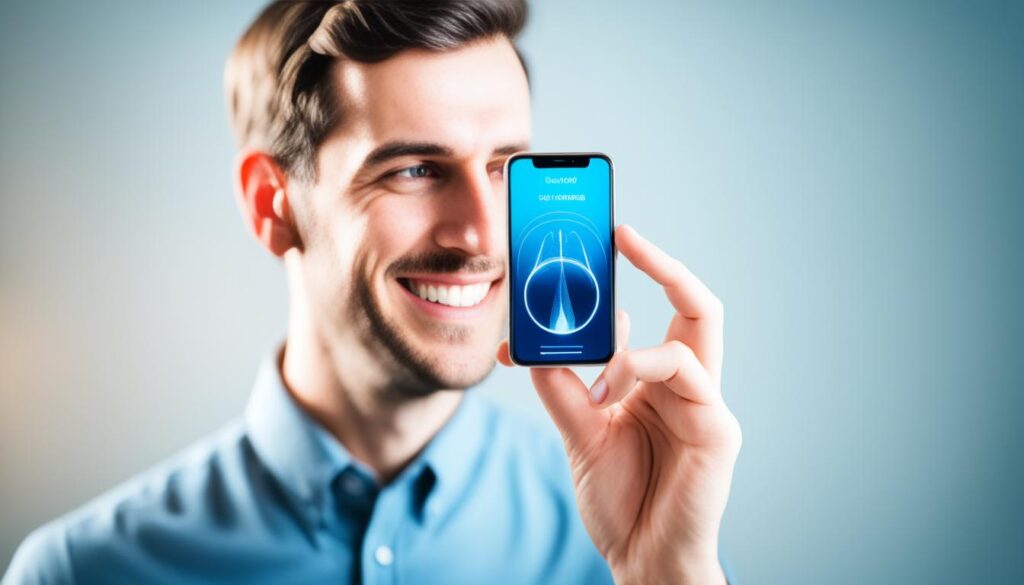
| Accessibility Tool | Key Features |
|---|---|
| Closed Captioning |
|
| Hearing Loop Systems |
|
| Captioned Telephones |
|
| Hearing Aids and Cochlear Implants |
|
Speech-to-Text Phones vs. Speech-to-Text Apps
When it comes to choosing between speech-to-text phones and speech-to-text apps, there are a few important factors to consider. Both options offer valuable features that can greatly benefit individuals with hearing impairments. Let’s explore the advantages of each:
Speech-to-Text Phones
Speech-to-text phones are dedicated devices specifically designed to assist individuals with hearing impairments. These phones offer a range of features tailored to enhance communication. Some of the key advantages of speech-to-text phones include:
- Large Display Screens: Speech-to-text phones typically have large display screens that make it easier to read the transcribed text.
- Adjustable Ringers: These phones often have adjustable ringers, allowing users to set the volume according to their hearing needs.
- Dedicated Communication Device: Using a dedicated speech-to-text phone ensures that users have a device solely focused on delivering accurate speech-to-text conversion.
Speech-to-text phones offer a comprehensive solution for individuals with hearing impairments, providing dedicated functionality and ease of use. However, it’s important to note that these phones require a separate device to carry and may be an additional expense.
Speech-to-Text Apps
Speech-to-text apps, on the other hand, provide the convenience of using devices that many individuals already have – their smartphones. These apps utilize speech recognition technology to convert spoken words into written text. Here are some advantages of using speech-to-text apps:
- Convenience: Speech-to-text apps can be easily installed on smartphones, eliminating the need to carry an additional device.
- Accessibility: With speech-to-text apps, individuals with hearing impairments can have access to speech-to-text functionality wherever they have their smartphones.
- Cost-Effective: Many speech-to-text apps are available for free or at a lower cost compared to dedicated speech-to-text phones.
Popular speech-to-text apps like Ava, Otter, and Google Live Transcribe provide accurate transcription and user-friendly interfaces, making communication more accessible for individuals with hearing impairments.
Choosing the Right Option
Deciding between a speech-to-text phone and a speech-to-text app depends on individual preferences and needs. Some individuals may find the dedicated functionality and ease of use of a speech-to-text phone beneficial, while others may prefer the convenience and cost-effectiveness of a speech-to-text app on their smartphones.
Ultimately, the goal is to enhance communication and accessibility for individuals with hearing impairments. Regardless of the choice, both speech-to-text phones and apps contribute to bridging the communication gap, allowing individuals with hearing impairments to participate fully in conversations and stay connected with others.
Hearing Impaired Phone Options
Individuals with hearing impairments have various options to choose from when it comes to finding a phone that meets their needs. These options include speech-to-text phones, amplifying phones, and phones with compatibility for hearing aids. But one option that stands out for its innovative capabilities is voice-to-text phones.
Voice-to-text phones are designed to convert spoken words into written text, providing a clearer and more accessible communication experience for those with hearing loss. By displaying written captions of the caller’s words, these phones enable individuals with hearing impairments to easily understand phone conversations.
With voice-to-text phones, individuals can simply read the transcriptions of the caller’s words on the phone’s screen, eliminating any barriers caused by hearing loss. This technology empowers the hearing impaired to stay connected with their loved ones, conduct business calls, and actively participate in conversations, all with ease and clarity.
By combining voice recognition and text conversion features, voice-to-text phones ensure that individuals with hearing loss can effectively communicate and maintain their independence. These phones are user-friendly and offer various customization options for font size, contrast, and other visual settings to suit the user’s preferences.
Modern voice-to-text phones also come equipped with additional features such as loud ringers, speakerphones, and compatibility with hearing aids. These features further enhance the communication experience and ensure that individuals with hearing impairments can rely on their phones for their day-to-day communication needs.
When selecting a phone for a hearing impaired individual, it’s essential to consider their specific needs and preferences. Voice-to-text phones provide an excellent option for those seeking a reliable and convenient solution to overcome the challenges posed by hearing loss.
Comparison of Hearing Impaired Phone Options
| Phone Type | Key Features | ||
|---|---|---|---|
| Speech-to-Text Phones | – Display written captions of the caller’s words | – Adjustable settings for visual preferences | – Compatibility with hearing aids |
| Amplifying Phones | – Enhanced volume for better hearing | – Adjustable settings for ringer volume and tone | – Compatibility with hearing aids |
| Voice-to-Text Phones | – Convert spoken words into written text | – Adjustable settings for font size and contrast | – Compatibility with hearing aids |

Choosing the right phone for individuals with hearing impairments involves considering their unique needs and preferences. While speech-to-text phones and amplifying phones have their advantages, voice-to-text phones offer the distinct benefit of converting spoken words into written text. This innovative feature ensures that individuals with hearing loss can easily understand phone conversations and stay connected with others.
It’s important to explore the available options and consult with experts to determine the most suitable phone for each individual’s specific requirements. Voice-to-text phones provide a practical and inclusive solution for individuals with hearing impairments, enabling them to communicate effectively and confidently.
Recommended Speech-to-Text Apps
When it comes to speech-to-text apps, there are a few notable options that stand out for their features and performance. These recommended apps provide accurate speech-to-text conversion, making communication easier for individuals with hearing impairments. Let’s take a closer look at them:
Ava
Ava is a powerful speech-to-text app that offers real-time transcription and collaboration features. It allows users to adjust text size, save and share transcripts, and add multiple speakers for better accuracy. With its user-friendly interface, Ava is a reliable choice for enhancing communication.
Otter
Otter is an AI-powered speech-to-text app that offers automatic transcription and note-taking capabilities. It features real-time collaboration, the ability to highlight and annotate transcriptions, and integration with popular productivity tools. Otter is a versatile app that adapts well to various communication needs.
Skype
Skype, a popular video calling app, also offers a built-in speech-to-text feature. This feature provides real-time transcription of spoken words during video calls, making conversations more accessible for individuals with hearing impairments. Skype’s speech-to-text capability is a convenient option for those who already use the app for communication.
Google Live Transcribe
Google Live Transcribe is an Android app that provides real-time speech-to-text transcription. It works with the device’s microphone to convert spoken words into written text, allowing users to follow conversations more easily. Google Live Transcribe is a reliable tool for individuals with hearing impairments who need on-the-go transcription.
Speechnotes
Speechnotes is a web-based speech-to-text app that offers a simple and intuitive interface. It enables users to dictate and transcribe their spoken words in real time, making it a handy tool for creating written documents. Speechnotes is a convenient option for individuals who prefer to use a web-based app for their speech-to-text needs.
These recommended speech-to-text apps offer a range of features to enhance communication for individuals with hearing impairments. Whether you’re looking for real-time transcription, collaborative functionality, or note-taking capabilities, these apps provide accessible solutions that make communication easier and more inclusive.
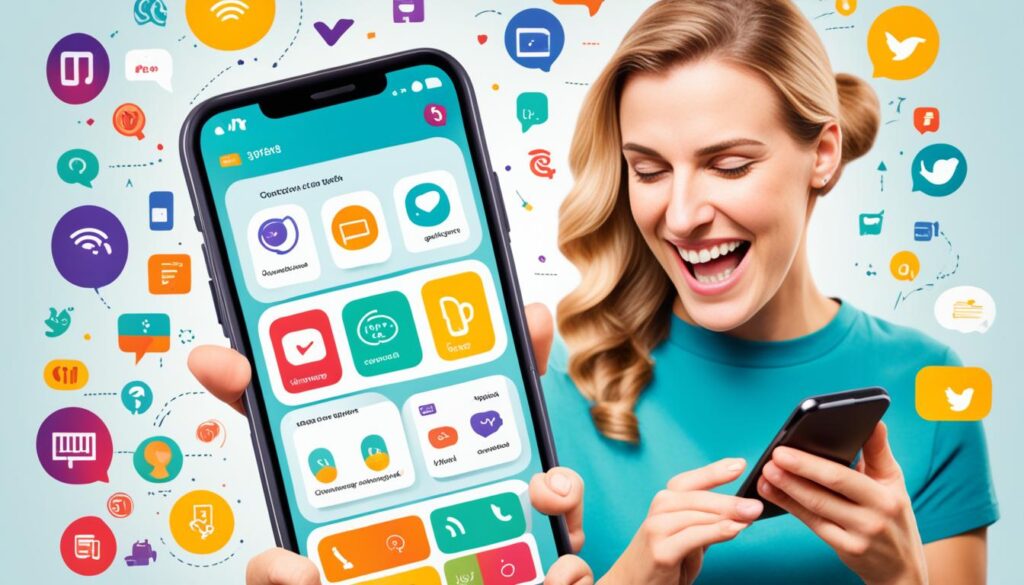
Advancements in Speech-to-Text Technology
The field of speech-to-text technology is constantly evolving, driven by advancements in artificial intelligence and machine learning algorithms. These developments aim to enhance the accuracy and functionality of speech-to-text systems, ultimately benefiting individuals with hearing impairments.
Researchers and developers are continuously working to improve the transcription process by incorporating advanced algorithms that analyze speech patterns and understand context. These advancements enable speech recognition systems to produce more accurate and reliable transcriptions, ensuring a better user experience for those relying on speech-to-text technology.
By harnessing the power of artificial intelligence, speech-to-text technology has the potential to revolutionize communication for individuals with hearing impairments. Voice recognition capabilities can adapt to different accents, dialects, and speech patterns, providing a more inclusive and accessible experience for users.
One of the key advantages of advancements in speech-to-text technology is the ability to capture non-verbal cues and emotional context. By analyzing subtle shifts in tone and inflection, speech recognition systems can convey the speaker’s emotions and intentions, adding depth and clarity to the transcriptions.
“Advancements in speech-to-text technology empower individuals with hearing impairments to participate fully in conversations and stay connected with others, improving their overall quality of life.”
Today, speech-to-text technology is widely used in various settings, including personal conversations, business meetings, and educational environments. The continuous advancements in this field contribute to breaking down communication barriers and enabling seamless interactions for individuals with hearing impairments.
To illustrate the impact of advancements in speech-to-text technology, consider the following example:
| Traditional Speech-to-Text Technology | Advancements in Speech-to-Text Technology |
|---|---|
| Relatively lower accuracy in transcriptions | Higher accuracy in transcriptions due to advanced algorithms |
| Difficulty capturing emotional context | Ability to capture emotional context through tone analysis |
| Limited adaptation to different accents | Improved adaptation to accents, dialects, and speech patterns |
| Less comprehensive understanding of context | Enhanced understanding of context for more accurate transcriptions |
As technology continues to advance, speech-to-text systems are becoming increasingly sophisticated, offering greater accuracy, context-awareness, and adaptability. These advancements empower individuals with hearing impairments to communicate effectively, fostering inclusivity and bridging the gap in accessibility.
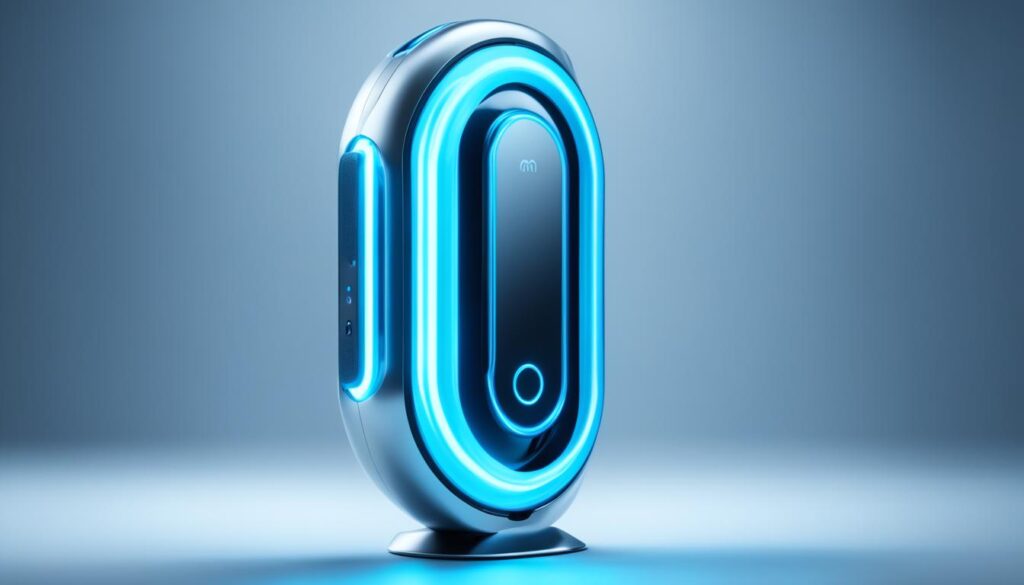
In conclusion, advancements in speech-to-text technology are transforming the way individuals with hearing impairments communicate. With ongoing research and development, these advancements are set to further improve the accuracy, functionality, and inclusivity of speech-to-text systems, ultimately enhancing accessibility for individuals with hearing impairments.
Conclusion
In conclusion, communication devices for the deaf, such as speech-to-text phones and apps, play a crucial role in enhancing the lives of individuals with hearing impairments. These accessible phones provide a means for the hearing impaired to fully participate in conversations and stay connected with their loved ones and the world around them.
With advancements in speech-to-text technology, there are now more options than ever for individuals with hearing impairments to choose from. From dedicated speech-to-text phones with large display screens to convenient smartphone apps, the range of communication devices available is extensive. This allows individuals with hearing impairments to find the solution that best suits their needs and preferences.
By utilizing these communication devices, individuals with hearing impairments can improve their overall quality of life. They can actively engage in personal and professional conversations, participate in meetings and educational settings, and stay informed through phone conversations. This accessibility fosters inclusion and empowers individuals with hearing impairments to lead fulfilling lives.
In summary, communication devices for the deaf, such as accessible phones for the hearing impaired, provide a lifeline for those with hearing impairments. Through the use of speech-to-text technology, individuals with hearing loss can overcome communication barriers and connect with the world around them. As technology continues to advance, we can expect even more innovative solutions to further improve the lives of individuals with hearing impairments.
FAQ
What are speech to text phones for hearing impaired?
Speech to text phones are a revolutionary technology that display written captions of the caller’s words, making it easier for individuals with hearing impairments to understand phone conversations.
What are Captioned Speech-to-Text Telephones?
Captioned speech-to-text telephones, also known as captioned phones, are amplifies phones that display every word the caller says on a large screen. They are designed to assist individuals with severe to profound hearing loss in understanding phone conversations.
What is CapTel and how does it help the hearing impaired?
CapTel is a brand that offers captioned speech-to-text telephones. Their phones display written captions of the caller’s words, making it easier for individuals with hearing loss to communicate over the phone.
Are there mobile apps available for speech-to-text conversion?
Yes, there are mobile apps available for speech-to-text conversion. These apps use speech recognition technology to transcribe spoken words into written text. Popular speech-to-text apps include Ava, Otter, Rogervoice, Skype, Google Live Transcribe, and Speechnotes.
What other communication devices are available for the hearing impaired?
Apart from speech-to-text phones and apps, there are various other communication devices available for individuals with hearing impairments. These devices include amplifiers for telephones and doorbells, vibrating alarm clocks, and visual signalers.
What are the advantages of speech-to-text technology?
Speech-to-text technology allows individuals with hearing impairments to have real-time access to spoken information, enhancing their understanding and participation in conversations. It can be used in various settings, including personal conversations, business meetings, and educational environments.
What accessibility tools are available for the hearing impaired?
Accessibility tools such as closed captioning for television and movies, hearing loop systems in public spaces, and captioned telephones are available for the hearing impaired. Hearing loss aids such as hearing aids and cochlear implants also provide assistance in improving hearing ability.
What is the difference between speech-to-text phones and speech-to-text apps?
Speech-to-text phones are dedicated devices specifically designed for individuals with hearing impairments, offering features like large display screens and adjustable ringers. Speech-to-text apps, on the other hand, can be installed on smartphones, providing the convenience of using a device that many individuals already have.
What phone options are available for the hearing impaired?
Individuals with hearing impairments have options such as speech-to-text phones, amplifying phones, and phones with compatibility for hearing aids. Voice to text phones, in particular, convert spoken words into written text, making it easier for individuals with hearing loss to understand phone conversations.
Which speech-to-text apps are recommended for individuals with hearing impairments?
Recommended speech-to-text apps for individuals with hearing impairments include Ava, Otter, Skype, Google Live Transcribe, and Speechnotes. These apps offer features such as adjustable text size, autocorrection of mistakes, and the ability to save and share transcripts.
What advancements are being made in speech-to-text technology?
Researchers and developers are incorporating artificial intelligence and machine learning algorithms into speech-to-text systems, resulting in more accurate transcription and better understanding of context. These advancements have the potential to revolutionize communication for individuals with hearing impairments.
How do communication devices and technology benefit the deaf community?
Communication devices and technology enhance accessibility for individuals with hearing impairments, allowing them to stay connected and communicate effectively. These devices and technologies improve the quality of life for the hearing impaired and contribute to a more inclusive society.


